When it comes to differentiated math instruction, it means that students are getting lessons and activities that are on their level. Each student gets what they need. Some students need more support and some need extension activities.
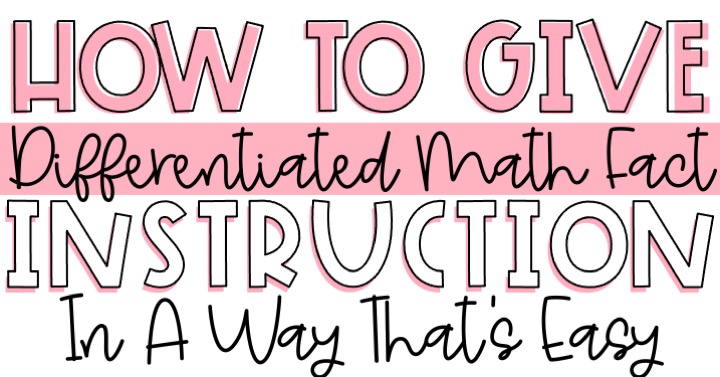
In this blog post I’ll be sharing different ways you can differentiate instruction for math facts so that your students can actually see progression in their math fact fluency.
Before we get into the nitty-gritty teacher talk, if you need more help getting your students to learn math facts in a way that sticks, I’ve got just the thing! You can learn my 7 secrets to getting students to the fast route to math fact mastery in my free workbook for 1st and 2nd grade teachers. Download the free workbook here: The 7 Steps to Ensure Math Fact Fluency.
Differentiated Instruction For Math Facts
When it comes to differentiated instruction for math facts, it’s important to know the different kinds of math facts. I like to split these into two different groups, easy facts and hard facts. Easy facts are easy for students to commit to memory. These are the facts where students add 0 and add 1. It also includes doubles facts and facts with the sum 0-10.
These facts lay the foundation for hard facts. Hard facts are those who have a sum 10-20. Students use known easy facts to find hard facts. So it’s important that students master easy facts first.
You can test students to see their progress on what facts they are working on. Then you can give them math fact activities that are differentiated to their needs.
You can also look at differentiated math instruction for math facts in another way. There are different stages to math fact mastery. First students start off with using counting strategies. They use blocks or their fingers to figure out the answer to a math fact. They may also use the counting on strategy or the counting back strategy. But we want students to move on to using reasoning strategies.
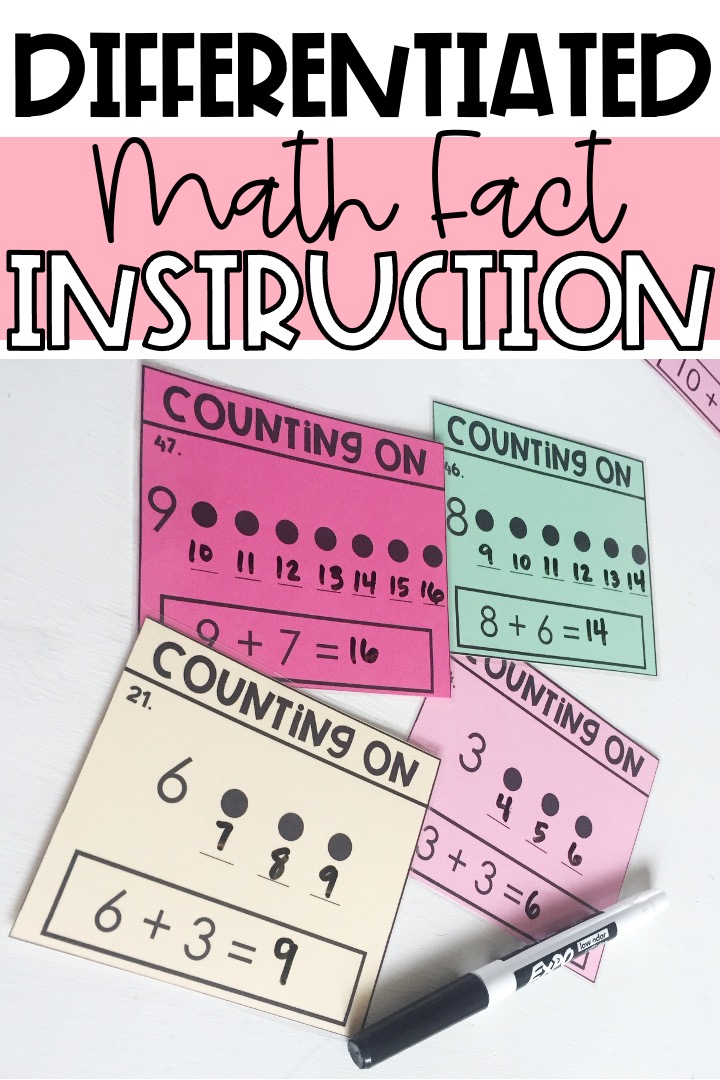
When it comes to differentiated math instruction, you can either see how students use math fact strategies or test them on easy facts and hard faces.
This is where students use facts they have committed to memory, to find facts they have not committed to memory yet. Once students get quick at using those reasoning strategies, they have reached math fact mastery. To learn more about the stages of math fact mastery, read this blog post here: The Three Stages of Math Fact Mastery
When you are watching students solve math facts, you can see what stage they are in. You can use this to differentiate math fact instruction. Let me give you some examples.
Differentiated Math Instruction Examples
As you are watching students solve math facts, take note of students who are using counting strategies and those who are using reasoning strategies.
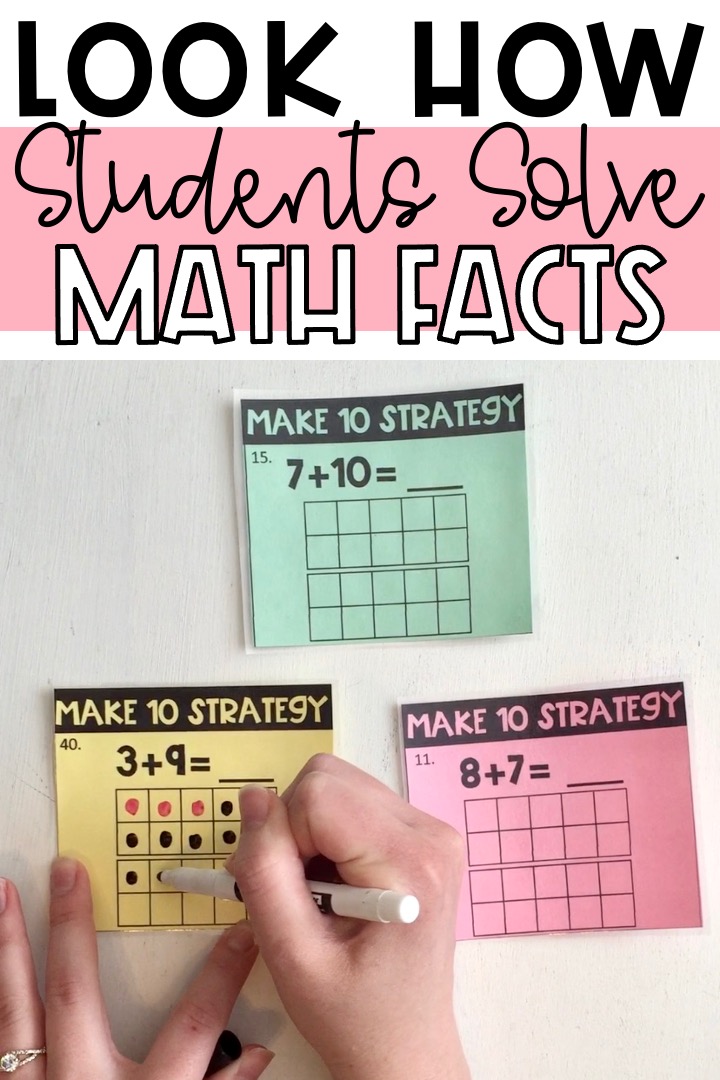
If you want to know what students need with math facts, you need to look how students solve math facts. Then you can give differentiated math fact instruction on the strategies they use and what they need to work on.
Split these students into groups. For the students who are working on counting strategies with blocks or fingers help them by teaching the counting on strategy. Learn more about this strategy in this blog post here. You can even get them lots of practice with the counting on strategy with these task cards here. They are great as a center activity!
When students are doing well with the counting on strategy and counting back strategy, teach them more of the reasoning strategies such as the make ten strategy. Read more about teaching this strategy here in this blog post: How to Teach the Make Ten Strategy. Get students the practice they need with the strategy with these Make Ten Task Cards. Find them here.
With students that are doing well with reasoning strategies, we want them to get faster at using them. Have them play different math fact games. While they are playing have them share their reasoning on how they get to the answer of each math fact. As they are sharing their reasoning, they are making connections and will be able to get there faster the next time they come across that fact. For a one page guide on all the math fact strategies, download my free workbook, The 7 Steps to Ensure Math Fact Fluency.
But remember how I talked about easy facts and hard facts before? How do you differentiated math fact instruction for those? Well, I do that with differentiated activities for math facts.
Differentiated Activities for Math
With all of my math fact games, I always have a version with facts 1-10 and facts 1-20. That way I can put students into groups for those working on easy facts and those working on hard facts. I like these differentiated activities for math to be games because I like making it fun for students. Students even ask to play these games during inside recess.
So you may be wondering, “what are these differentiated activities for math?” Well, let me share some of my students’ favorites games.
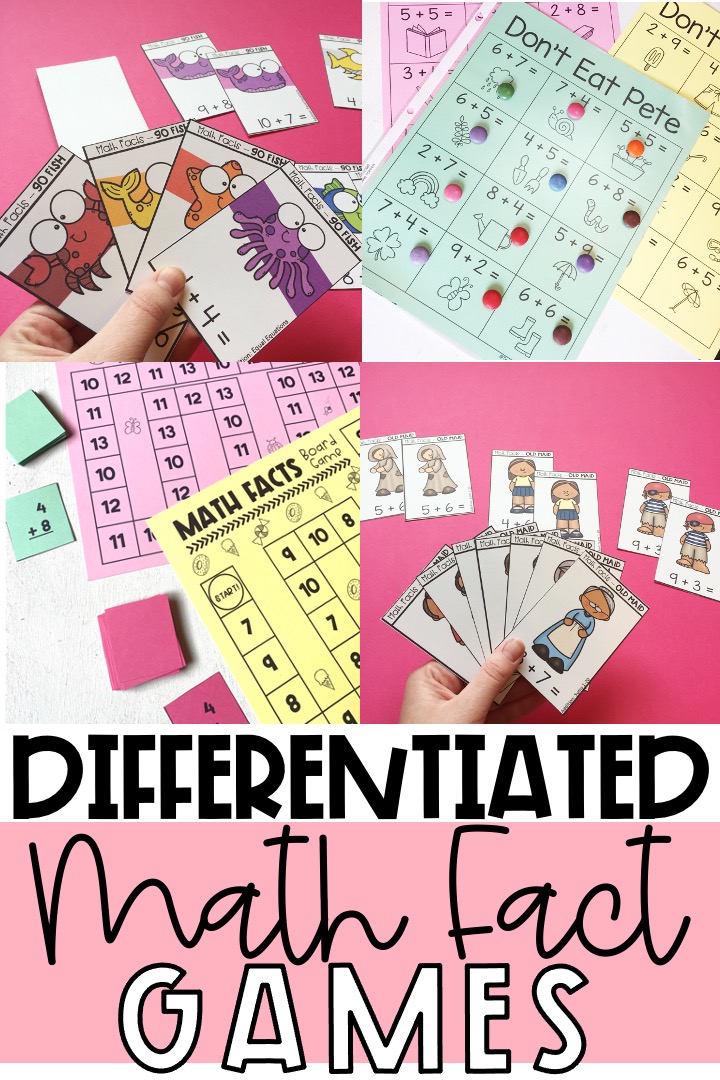
Give students a variety of differentiated activities for math fact practice. They never get bored and love playing the games.
A favorite math fact game in my classroom is Math Fact Old Maid. Students really get into this game! Each match in the Old Maid game has an equation. As students find matches, they have to figure out the math fact and say it. I also have students record the matches on a piece of paper so I know they are playing the game correctly and practicing their math facts with it. This game is so popular in my classroom that I set out both an addition and subtraction version for students to play. Find my Math Facts Old Maid game here.
Another math fact card game I have in my classroom is Math Facts Go Fish. Students are again looking for matches by asking another player for an answer to a math fact. Cards have equal equations. Students have to sort through their cards to find the match, doing math facts in their head as they do so. I love how much practice they get with math facts in this game! I also set out a set of Math Facts Go Fish with ten frames. Students have to find the ten frames that match the equation as they play Go Fish. I also have a recording page with this game to keep students accountable as they are having fun! Find this Go Fish here.
For a full list of differentiated math games I use in my classroom, read this blog post here: The Best 9 Games for Math Fact Practice.
To save money on my differentiated math fact games, check out this bundle here.
If you want your students to get better at math facts, they need differentiated instruction for math facts. It comes by knowing where your students are at with math facts and then giving them differentiated activities for math facts that meet their needs. As they practice math facts they individually need, they will make progress towards math fact mastery. For an in depth guide to getting your students to math fact mastery, download my free workbook here: The 7 Steps to Ensure Math Fact Mastery
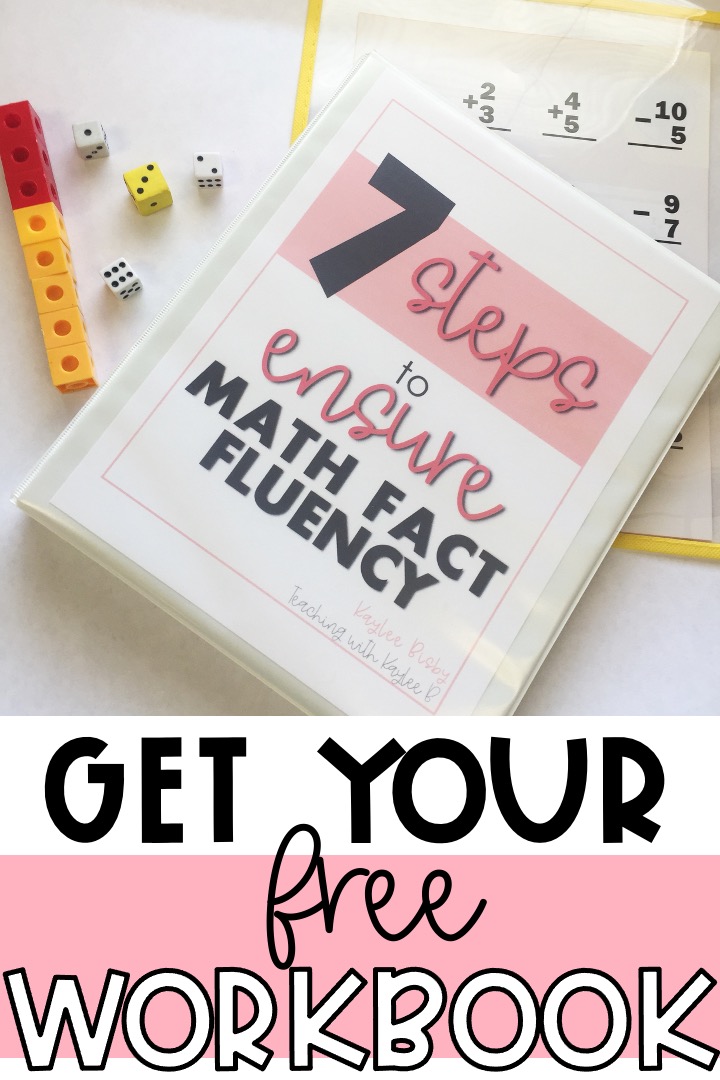

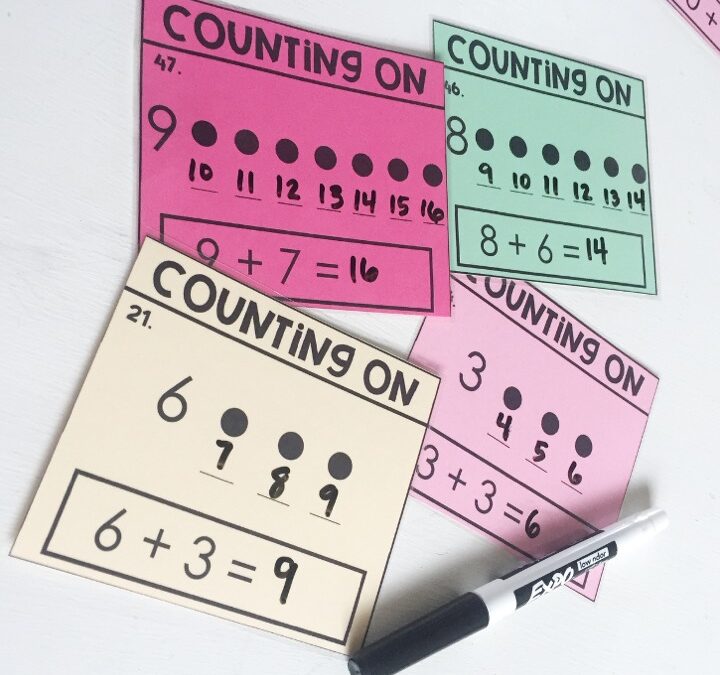

Great tips!
Thanks, Betsy! So glad you find them helpful.